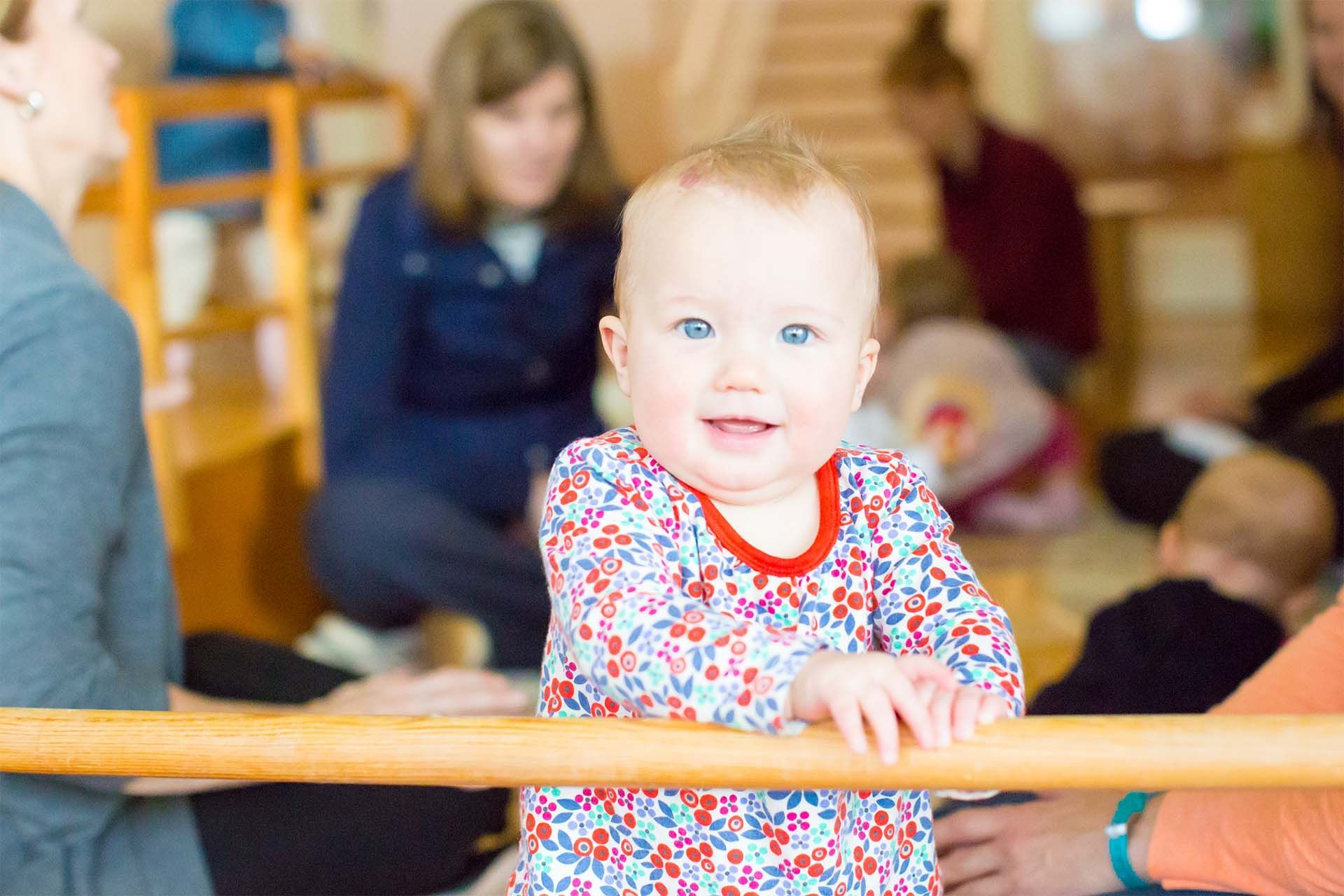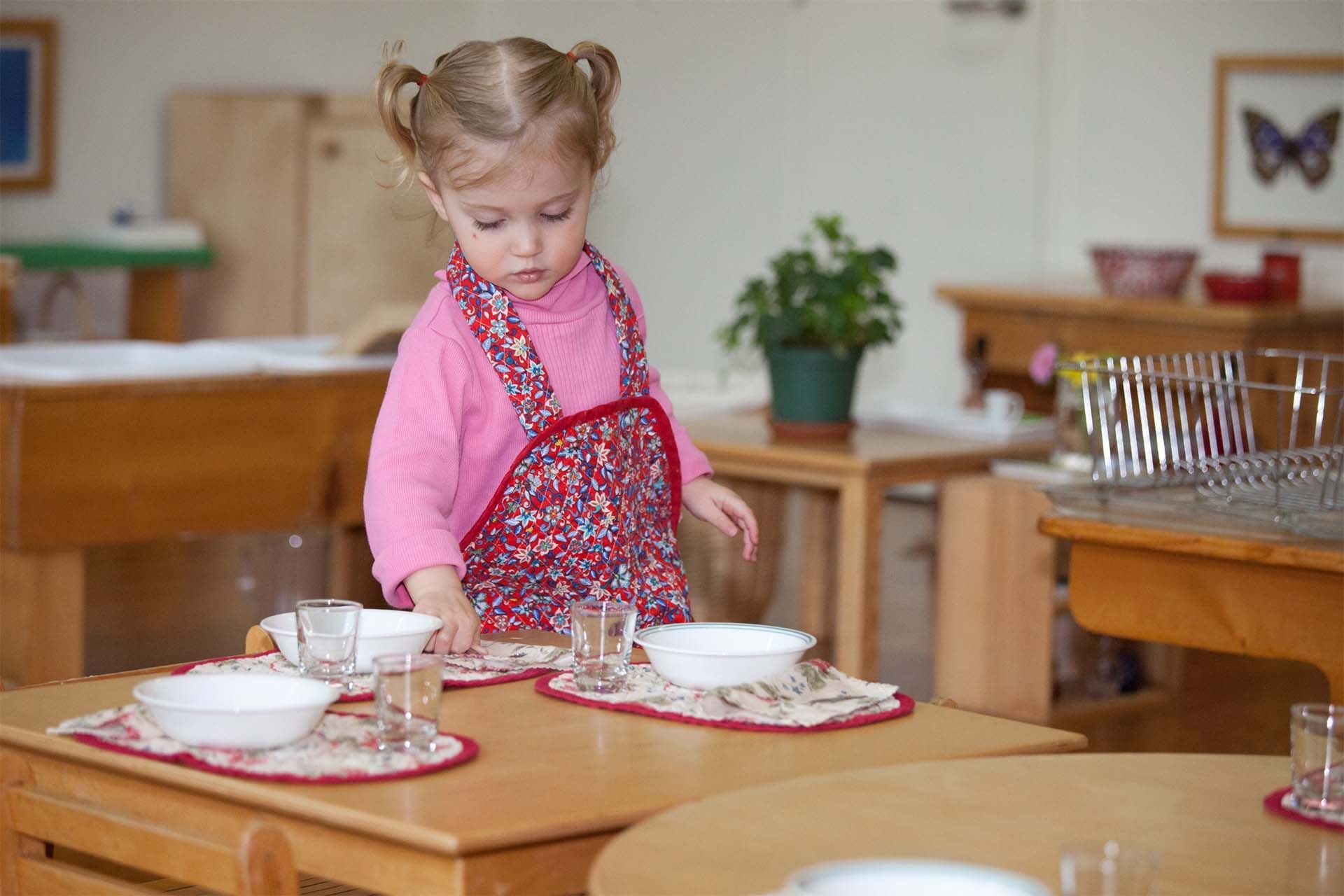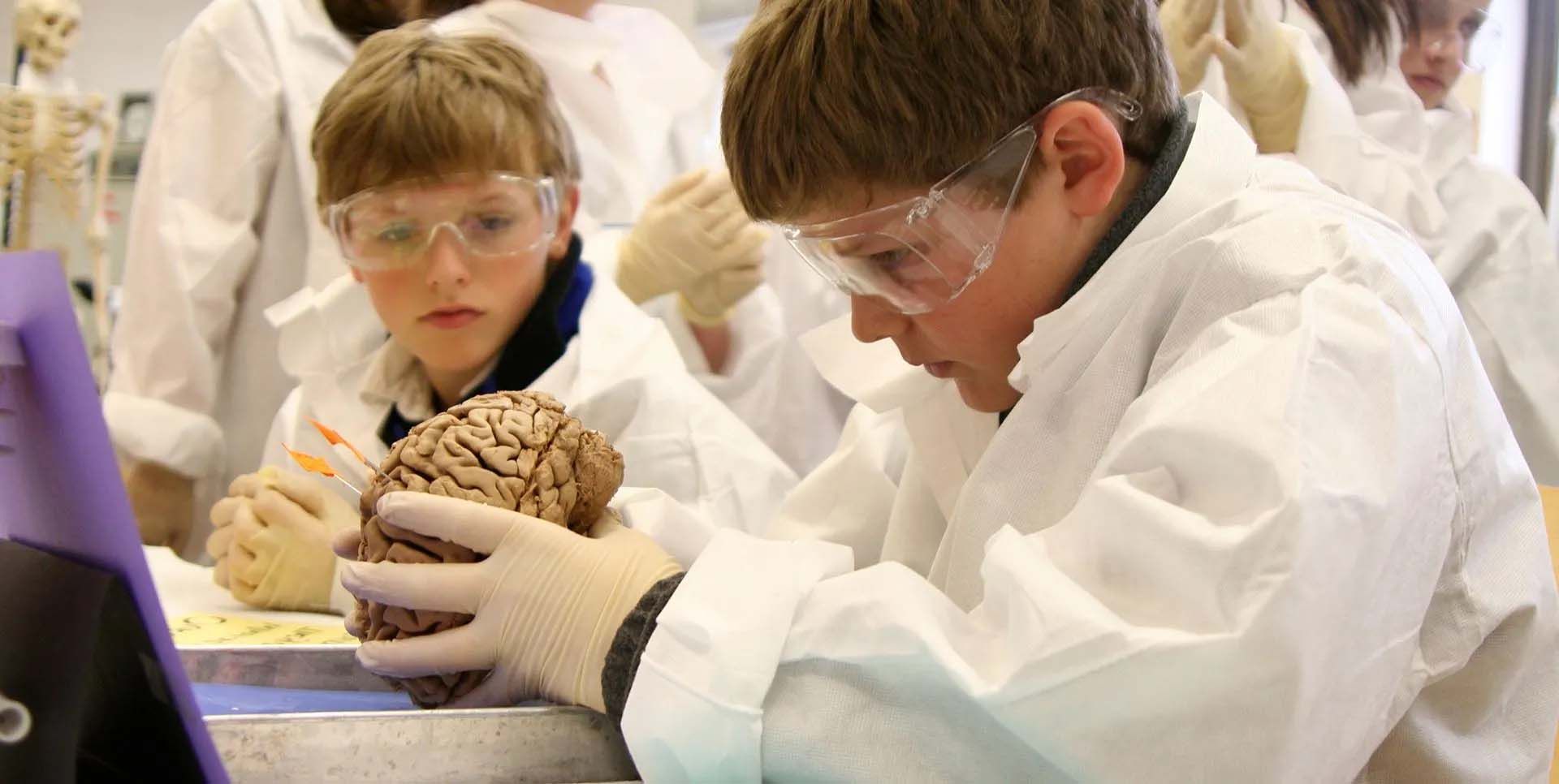By Paula Lillard Preschlack
•
21 Jul, 2024
This piece was delivered as a “coffee discussion” I led with groups of parents from Forest Bluff School, a Montessori school in Lake Bluff, Illinois, serving children ages 18 months to 14 years old. The purpose of these discussions is to give parents ideas for home and explore how to use Montessori’s helpful approach. Anyone can benefit; I hope you will! What Are We Talking About? Why is “Home”, “Character” and “Turbulent” in the same title?! Before I dive into how we can raise courageous children, I’ll unpack why each word is relevant: Let’s start with the word Character : when parents are polled, overwhelmingly they’ll say they want to raise good people. We have many hopes for our children past this, but sending good people into the world seems to be a widespread and basic, parenting goal. Parents want their children to grow up with what they believe is good character! But character is not a genetic gift, nor is it something handed to a child; rather, it is what we build in ourselves, through our life experiences, through our exposures to what surrounds us. As our children grow, they develop character. And for this, children must have repeated, positive experiences. Consider this word from the title: Turbulent . We are surrounded by turbulence, whether it be personal and immediate, or remote; wars are happening in the world right now, and that is brought into our daily lives by the media and by social media, mainly through our phones that come with us everywhere, right in our pockets. We complain about this constancy and stress, but one of our main characteristics as human beings, is that we care about others! If someone is suffering, we are drawn towards the story. We seem to have an impulse for sharing experiences and a desire to help one another. We think of our fellow human beings, even when we are not with them. Caring about others is a character trait, one we want our children to develop. This development happens in positive early environments. In a Montessori school, the curriculum for elementary children explains that humans have 3 qualities that no other creatures have, which set us apart and makes us unique: we have opposing thumbs which enable us to make complex tools with our hands; we have minds that can think in unique ways; and we have a capacity for love that transcends familiarity, because we can feel love and concerns for people we don’t even know. We often wish other humans well, even from the other side of the earth. There is turbulence, strife, and struggle in every person’s life. Just as when we’re in an airplane, though, turbulence–as rough or as frightening as it may be–does pass in waves. And as with a rough ocean surface, we can maintain a relative calm underneath the surface if we learn how to. Learning to calm ourselves becomes part of us. We learn to do this in childhood. Another part of our title is Home . Your home can be a sanctuary for your family, a place to return to. You can make it a place to build strength, to receive love, to build optimism, and to create positive language for describing the world and describing other people. This can be done in very basic ways. We’re not talking about anything extravagant or difficult. Through your simple actions and attitudes, home can be a place for your children to build the character needed for navigating through life. Three Key Messages Today, I have 3 key messages I’d like to share with you: The first is that although the world is turbulent, you and your children do have choices to exercise, every day. (For specific suggestions about choices for children, moral development and appropriate limit-setting, see several articles here: paulalillardpreschlack.com/my-writing/ ). We want to focus on giving our children micro choices to experience that having choice is freedom. Now, it’s true that in some things, there is no choice! Those are limits, and we need those limits to provide boundaries. But the choices we have in life, including how to behave, and what to think, and how to work with our feelings, are freedoms that go with you everywhere and into every circumstance. No one is powerless. The second is that every family needs a source for their moral values . What is that source for you? Is it religion? If so, how do you share this with your children? Is it the natural world? If so, how do you present the lessons of the natural world to them? Is it family stories of heroic actions, and your heritage? You must have a source, a compass to guide you as a family, and to draw on it. This happens naturally when you make a comment, say a prayer out loud, or tell a little story about your grandparents. And the third message, is that children go through developmental stages when their needs and characteristics differ , so if we want to be effective with our children, we need to adjust our language, our behavior, and our interaction style to match. This fact is a very helpful, central lesson from Dr. Maria Montessori. Here is an anecdote to point out that children–unconsciously by nature–have drives propelling them to develop; ones which we can support if we recognize them. Imagine for a moment that you are standing in a piazza in Rome around the year 1909 and you’re sitting on a bench next to Maria Montessori. Here is what she says: "I once saw in the gardens of the Pincio in Rome, a very beautiful child of about a year and a half. He had an empty bucket and a little spade and was busy collecting pebbles from the path to fill it. Near the smiling child was a distinguished looking nurse, who was obviously well-disposed towards him and who must have been most affectionate and intelligent in her care. It was time to depart, and the nurse patiently entreated the child to leave his work and let himself be placed into his buggy. In the face of the child’s resistance, all her exhortations were of no avail. She finally filled up the pail with gravel herself and then put the gravel and the child in the carriage, certain that she had pleased him. The loud cries of the child indicated that this was not so. His shouts of protest at the violence and injustice which had been done to him struck me . What a weight of resentment filled his heart! The child had not really wanted to fill the pail with gravel; he had simply wanted to carry out the exercise needed to fill it and thus satisfy the needs of his growing body. The end sought by the child was his own inner formation, not the external act of filling a pail with little stones. His lively attachment to the exterior world was only an illusion; his vital need was a reality. Actually, if he had filled the pail, he would probably have emptied it so that he could fill it again many times over until he had completely satisfied himself.…This simple episode is an example of what happens to children all over the world, even to the best and most dearly beloved. They are not understood because adults judge them by their own standards ” (Montessori, The Discovery of the Child, 1967). Do you see how Montessori upends some of our logical adult reactions? If we re-train ourselves to step back, observe and reflect with the lens that each child is trying to do things for themselves, then we can proceed accordingly. Noticing children’s developmental needs in each stage is the key to helping them build their own character. Children of all ages must do things for themselves, again and again. They need to build their bodies to function, and their minds. Through their actions, they build themselves as people. We absolutely cannot do it for them. What we can do is set up the environment, choose what we expose them to, guide them, and set an example by modeling with our own actions, words, and daily lives. Let’s briefly consider just a few needs at each stage of childhood, because these differ between your children’s differing ages. Different Needs for Different Ages Early Childhood: Infants to 5-year-olds Infants and young children need reality and stability, clarity and consistency. They learn from real life experiences, and their understanding comes more easily when we are very literal. For these ages, keep things simple. It’s “black and white” thinking for this early stage. Things are either true or false. Adults are either in charge or they are not, (and they need you to be in charge to feel safe and secure!) Many adults do not realize that very young children absorb fairy tales, scary images, or violence just as easily and automatically as they absorb true stories, love, and how to be kind. Very young children use everything they are exposed to, to form their understandings of the world and their personalities. What we expose them to, impacts them deeply. They need a sense of security with reality, which comes from experiencing the real, material world around them. Some research has shown that young children are confused by fantastical books and screen images, so try to replace these with content from the beautiful natural world around them, and with true stories with heartfelt themes; remember, they are building character! Childhood: Elementary-aged children (6-12 years old) These are the ages when social and moral development becomes a fascination for your children. (And now they can recognize the difference between what is real and what is fantastical; how fun!) At these ages, children need to play and interact with peers. Sometimes, they need to do so without the controlling supervision of adults; this is when elementary-aged children make mistakes, work things out, and really learn how to get along. These are the ages, Maria Montessori observed, for children to study society, culture, and history intensively, because they are so curious about people. While exploring these topics, children need the positive view, such as a Montessori curriculum offers. In the history curriculum, for example, Montessori teachers suggest that we thank the peoples who invented and contributed to our number system, alphabet, clock time, music and arts, the furniture that makes us more comfortable, and so on, in specific stories. Expressing gratitude–in this case towards other societies that have contributed to our lives–becomes a habit. This is also when children learn, perceptively, about forgiveness; the power of an apology, making lots of mistakes, and learning from them. They need to experience, over and over, how to express thoughts and feelings in words, and how to find understanding with another person, through in-person interactions where social cues come through body language, gestures, facial expressions, and voice intonation. Adolescence: Young Adults (ages 12-18) Now the nuance of the “grey areas” in life come to light. For example, you may find a very honest teenager telling a lie if it is to protect a friend, because he chose the code of loyalty over the code for honesty during this stage of his life. These are the ages when children learn that sometimes even adults make poor choices or mistakes, that we’re still learning. Your adolescents don’t need to know everything about your life, but they do need to see you admit your own mistakes now and then, and witness how you remedy these and move forward. You are a living example for them. Adolescents need emotional support and they still need loving limits. But they are clever enough to figure many things out; they do not appreciate lectures and drills, and we get in the way when we try to tell them things. Instead, we parents must conduct ourselves morally and with character, as best we can. You reveal your moral values through your actions. Please note: everything I have described here refers to children and adolescents who are spending almost all of their time interacting with you and other people in real-time, rather than with screens and with social media. (See Jonathan Haidt’s suggestions for appropriate screen time limits in The Anxious Generation, 2024, or his Substack articles in After Babel). Do you see how children learn to be independent from us very gradually, in stages? Montessori reminds us that from the first year of life, children are asking us to help them to accomplish things by their own powers : “The adult must help the child to do things entirely on his own, for if the child does not reach the point of ceasing to rely on the help of adults and become independent, he will never fully mature intellectually or morally” (Montessori, Education and Peace, 1972). Our parenting path is eased when we recognize this. Knowing that our children’s full independence from us is their ultimate goal, which will evolve gradually with freedoms and limits that match each age, enables us to successfully foster their character development. Freedom and Limits For your children of all ages, freedoms, in the form of choices that you offer them, and limits, in the form of boundaries that you keep in firmly in place, create a balance. This balance allows children to develop responsibility in their actions. The choices you give your children–when and where appropriate–help them to build their character by their own powers. When you set a limit, feel confident and secure that you are giving your child what they need to live a very happy life! Life has limits. For example, one requirement in your home might be that everyone pitches in when it’s time to clean up. This sends the message that our children are not honored guests in the home; they are part of the family, important members of the team. Psychologist Jim Fay tells a story where his wife sometimes said, “I’ll help!” when a child seemed discouraged about their chores. One day, Fay heard the children all say, “I’ll help!” when their mother expressed dreading her own household tasks. This creates a culture of being helpful; it builds character! For more about this balance of freedom and limit-setting, see articles at: paulalillardpreschlack.com/my-writing/ Creating a Sanctuary at Home There are physical signals we give our children by how we prepare our homes, and through our actions at home. These can be simple preparations and actions, such as: Lighting a candle. Setting a fire in the fireplace. Settling on the couch to read a book. Looking at the stars and the moon before bed. Reading poetry before starting a meal. Listening to music on a rainy day. Playing a musical instrument in the house. Playing a card or board game together. Making a meal with everyone helping. Sitting together quietly without any distractions to talk to each other! These practices and habits reveal our priorities and values, which our children will witness. Think about your favorite places, and bring your children there regularly. These might be: parks, riversides, lakesides, paths in the woods, open fields, libraries, churches, temples, museums, or someone else’s home. Perhaps these places offer peace and resilience. The books and stories that you share are also sources of values. Repeat the ones that mean the most to you. I highly recommend children’s classics, especially the ones that are timeless. Find suggested book lists for each age here . Very young children appear to love rituals. What are your family rituals? Is it church or temple on Sundays? Or walks in the woods as a family? Cooking a meal together? Playing a game every Saturday night? Is it reading together at bedtime every night? Every day, you are building habits with your family. They can be minimal and simple; anything you can manage to do matters. Putting all the screens, phones and smartwatches away so that we have times without distractions is a key element to building healthy habits and empowering our children to build their own characters. Optimism for the Future What has helped me to step away from the turbulence of stressful news going on all around us, is diving into my bookshelf and enveloping myself in certain themes of thought, listening to great thinkers while driving, reading interesting books, and talking to people about meaningful ideas. This gives me a better understanding of what is happening in the world today, and renewed hope for the future. Here are a few takeaways from some favorites on my bookshelf: The Road to Character by David Brooks: “The essential drama of life is to construct character, which is an engraved set of disciplined habits, a settled disposition to do good.” How Children Succeed by Paul Tough: When [conventional] educators try to teach character, they are largely ineffective. Studies have shown no significant impact at all from such programs, not on student behavior, academic achievement, or school culture. However, here is what does matter: self-discipline scores are a better predictor of academic and life success than IQ or GPAs. In sum, willpower matters! The Marshmallow Test by Walter Mischel: The ability to distract oneself is key. This is an ability we build in childhood and rehearse in adulthood. It’s really about attending to what one chooses to prioritize. Where we direct our attention makes all the difference. Flow: The Psychology of Optimal Experience, Illuminating the Path to Happiness by Mihaly Csikszentmihalyi: “How we feel about ourselves, the joy we get from living, ultimately depends directly on how the mind filters and interprets everyday experiences.” Exercising one’s thinking habits to control where our thoughts go, leads directly to happiness. I leave you with these questions to ponder: What did you learn from your own parents growing up? How did your home life prepare you for the outside world you later faced? What do you hope to pass on to your children?








